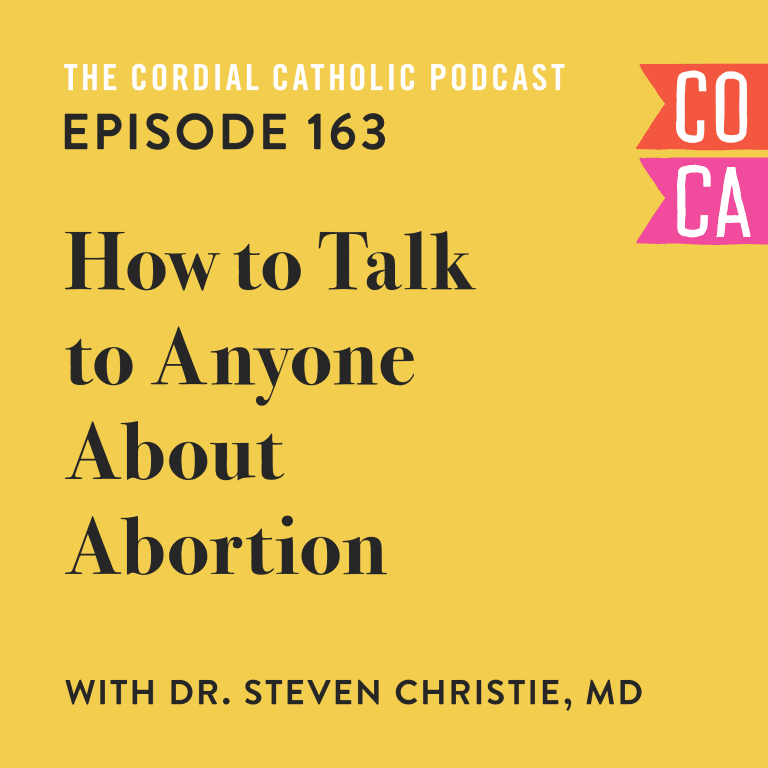
All complex moral discussion are, by their very nature, complex. The abortion debate is no exception. But understanding the premises from which each side is speaking is, I argue, fundamental to having a productive, meaningful, and empathetic discussion.
The kind of discussion which is lately non-existent.
Imagine you and I are talking about fruit. I am describing a fruit which is long and yellow. You are describing a fruit which is round and orange. It would help to know that what you are describing is an orange and what I am describing is a banana. If we think we’re talking about the same fruit we’ll get absolutely nowhere, right from the start.
I see the same thing happening in the popular discussion around abortion.
Before I say anything more I want to thank you for reading this far.
This is, I understand, an emotionally charged issue. There are few issues likely less changed than this. I understand that many of my readers will have experienced abortions. I understand that certain terms carry with them different meanings for different people. I have gone to great pains to try and speak in the most objective, neutral language as possible. For example, I use the term “anti-abortion” rather than the more polemic “pro-life” although even this is a clumsy characterization. People who are anti-abortion may not like being characterized as being against abortion but rather in favour of the rights of the unborn child. Likewise, someone that I must, for the sake of clarity, describe as “pro-abortion” may not like being described as merely in favour of abortion but, rather, in favour of the rights of women to control their own bodies.
I understand, too, that I am unabashedly a Catholic writer—this for many will have particular and immediate connotations. This discussion, like all complex moral discussions, is messy by necessity. Please bear with me and know that I am at great pains to try and speak objectively and fairly for all sides.
This isn’t a discussion about the nuances of the abortion debate but rather an attempt at a compelling re-framing of the discussion. A faint hope, perhaps, that if we define the terms we are using to begin talking about abortion we can better understand each others’ perspectives and, ultimately, communicate better.
Even when we disagree.
Here are two premises:
- Most people agree that killing another human being is something which should be avoided.
- Most people agree that controlling another human being’s reproductive system is something which should be avoided.
Consider these two premises. Do you agree with both of them?
For our purposes here, I think that most people would. Independently, I can easily argue for both (1) and (2). Apart from extreme cases, killing another human being is wrong. Most of us agree to this. In the view of most people, another person’s life is just as valuable as another’s is; they should be allowed to carry on living without any kind of interference which would otherwise terminate their life.
In the case of (2), apart from extreme cases, exerting control over another human being’s reproductive system is wrong. For a state, an organization, or another person to try to control how someone uses an aspect of their own body is wrong. Most of us agree to this. Unwanted male or female sterilization, for example, apart from extreme cases, is universally unacceptable.
We agree, independently, to both of these premises.
The difficulty arises when we try to pit one premise against another, and wind up fundamentally misunderstanding each other in the course of the debate on abortion.
In the anti-abortion camp, most activists recognize the issue as one of the unborn human person having fundamental rights despite not being born. From this perspective, anti-abortion activists are framing the abortion debate from the perspective of premise (1): an abortion is killing another human being and killing another human being is something which should be avoided.
Anti-abortion activists, by and large, are advocating against what they see as unnecessary killing.
In the pro-abortion camp—again these terms are clumsy at best—most activists recognize the issue as one of women having the ultimate right to control their own reproductive systems. From this perspective, pro-abortion activists are framing the abortion debate from the perspective of premise (2): prohibiting abortion is an assertion of control over and above a woman’s right to control her own body which is something that should be avoided.
By and large, those on both sides of the debate are approaching a conversation from fundamentally different premises. Different starting points. As a result, the conversation simply can’t get off the ground and the minute we begin to make any headway we plunge, headlong, back into the dirt.
I submit, instead, that what is fundamental here is this: a re-framing of the discussion.
Understanding that this is an emotionally charged, largely polemic discussion, we can make honest progress towards understanding each other and having meaningful dialogue if we understand where each other is coming from—at an absolutely fundamental level.
At the ground floor of the conversation.
Understand, then, that the anti-abortion activist views the issue as one of killing an unborn human person, fully endowed with the same human rights as you and I.
Likewise, understand that the pro-abortion activist views the issue as one of infringement on the fundamental reproductive rights of a woman.
Independently, most people can get behind supporting both of these premises. However, in the course of the abortion debate, because we are approaching this topic from radically different starting points, we are often at loggerheads, often simply discussing different things when we try to speak about the subject.
Instead, let’s step back and understand where each other is begging. Shore up some empathy for the person who sees abortion as the killing of an innocent person. Muster some understanding for the other, who sees it as a fundamental infringement on hard-won human rights. Reframe the conversation, and begin to understand where your conversation partner is beginning from, and build a bridge from there.
Let’s take a breath, take a break, and step back to understand the starting point each other has as we begin, again, to have this very important discussion.












